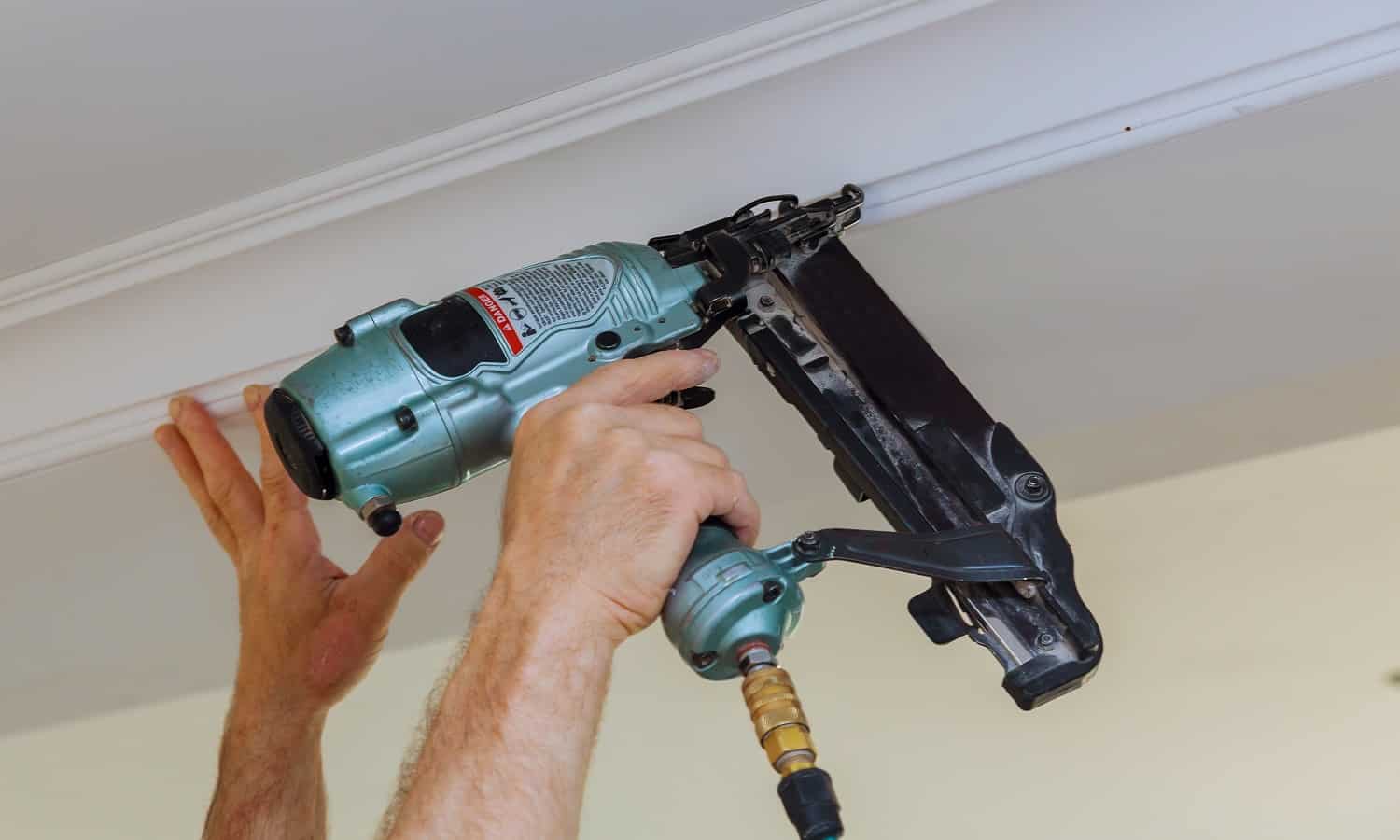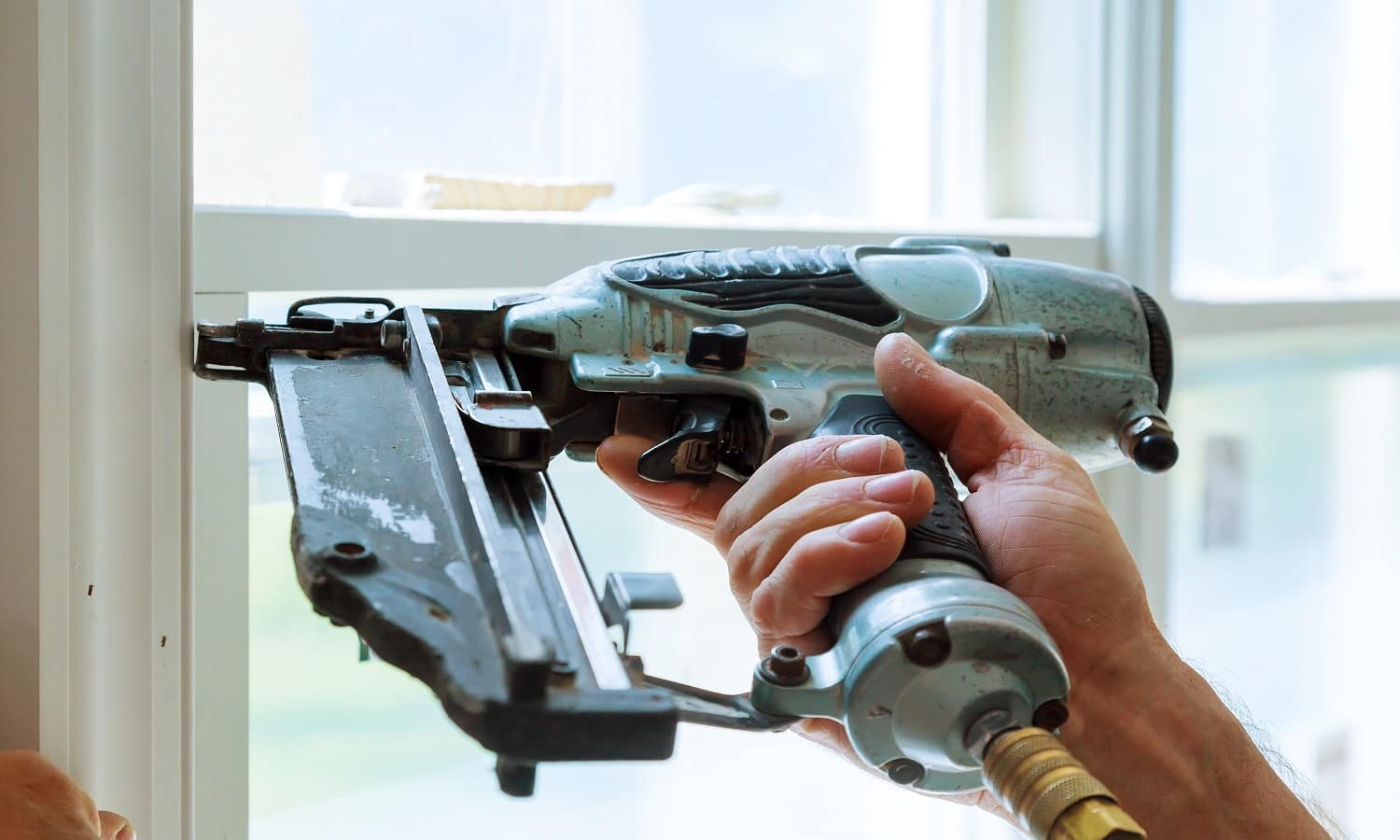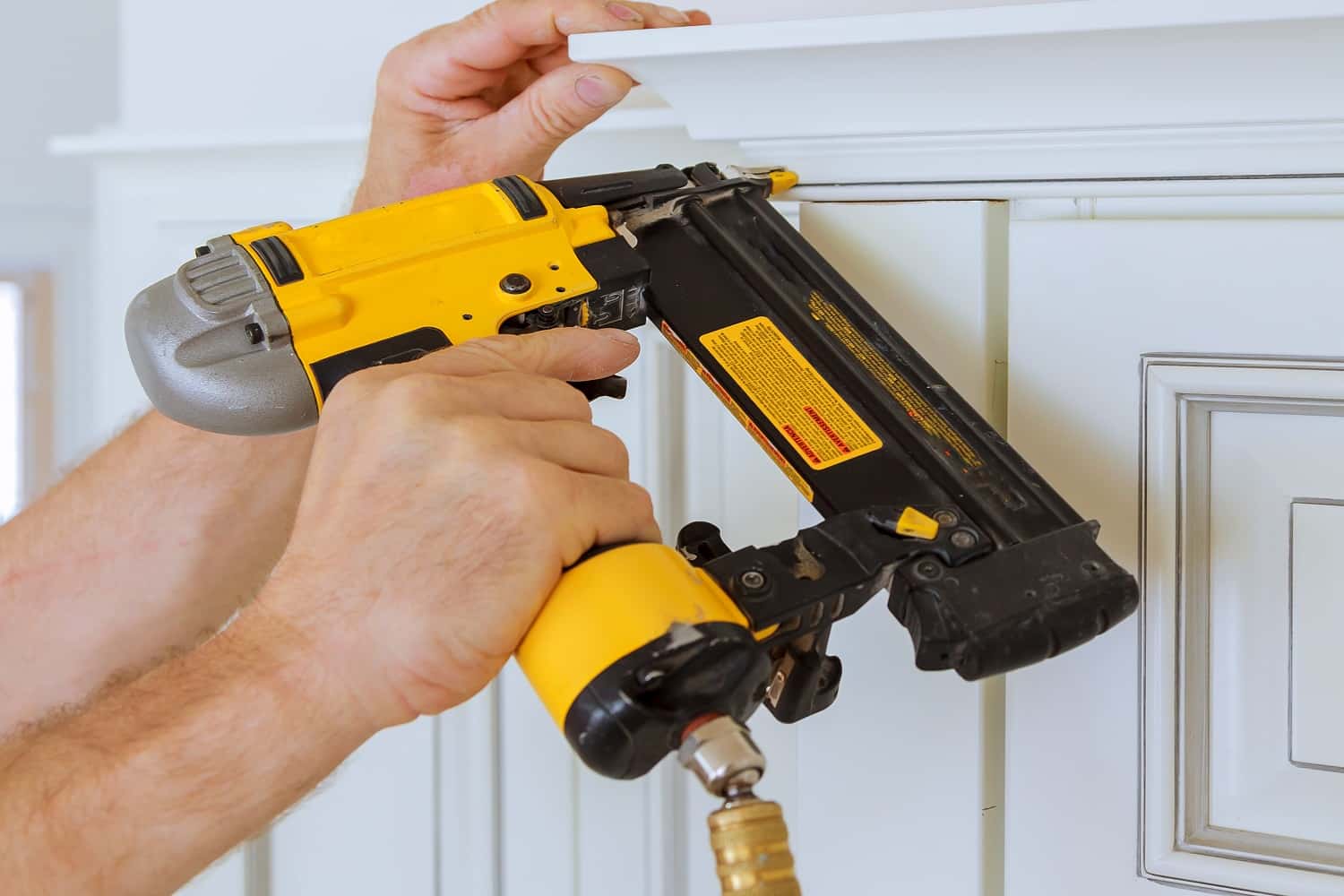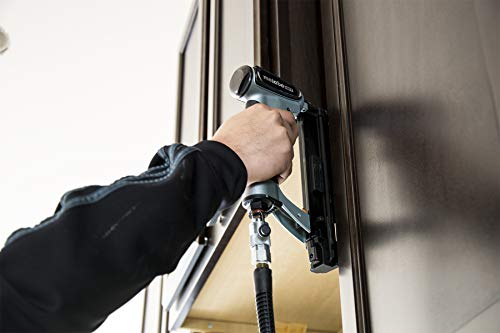 Reviewed by
Sudarshan Kar
Reviewed by
Sudarshan Kar
Although crafting world-class furniture may not appear as intricate on the outside, it’s always the fine details that add to its exquisite appeal.

Ask any professional or DIY carpentry expert - finishing these jobs calls for undivided attention, dedication, and consistent effort. If you’re aiming for your DIY project to be flawless, you have to focus on the littlest aspects that contribute to perfection.
And if you hold any experience in carpentry, you’re surely aware of the different types of finishing nailers. Whether you’re working on a brand new project from scratch or renovating an existing one, you’ll need an excellent reliable nailer.
Why? Well, to nail the job!
Now when it comes to nailers, many are frequently confused among two of the most common types - pin nailers and brad nailers. Let alone the key differences between these two types of nailers; they’re hardly informed about their advantages and disadvantages.
Worry not, we’re here to shed light on the pin nailer vs. brad nailer debate. So, what exactly sets these products apart? How do these individually benefit your cause? Let’s find out!
Pin Nailer vs. Brad Nailer 101

What is a Pin Nailer?
Before we dive deep into our discussion, let’s address the basics first. So, what is a pin nailer? Not rocket science, if not anything else. You see, finish nailers are sophisticated carpentry tools that vary broadly. And pin nailers are the smallest alternatives in that category, which apply a thin 23-gauge pin.
Also, these are the most common sort of finish nailers you’ll find in the market, which pretty much explains their dynamic popularity.
A vast number of brands have launched an abundance of pin nailers that vary in sizes amidst 2” to ⅜”. Now moving to its design, pin nailers are usually compact and headless, featuring a tiny visible hole for nail ejection. However, don’t underestimate its size for its efficiency, as these nailers are capable of penetrating the hardest of woods with utmost precision.
Regardless, these products are most commonly used by manufacturers while attaching ultralight materials, for instance, clothes. Usually, the ejected pins don’t come off as arched, but they can still conjoin the substances appropriately with cohesive force and utmost strength. Although this pin doesn’t feature heads, it adds a visually appealing finish touch to the job being done.
Instead, it finishes the job with such accuracy that you won’t need a putty to cover up the surface, which sets it apart from other nailers. And speaking of capacity, the pin nailers commonly work with pins that are somewhere between 1” to 2” in length. However, heavy-duty jobs call for larger nails, and that’s where you can push the nailer behind its limits by using ⅜” pins.
Types of Pin Nailers
Now that we’ve understood what are pin nailers, let’s have a look at their main types. Primarily, there are two types, i.e., pneumatic pin nailers and electric pin nailers.
-
Pneumatic Pin Nailer
As you can guess by its name, the primary characteristic of pneumatic pin nailers is being air-powered. To put it simply, these pin nailers are powered by compressed air and support headless pin nails. These nailers are quite useful when it comes to small-duty jobs such as DIY renovation, trimming jobs, and craft. Compared to electric pin nailers, these products come off to be quite low-priced.
-
Electric Pin Nailer
If you appreciate portability and high-end performance the most, then electric pin nailers are what you need in your professional toolbox. These products rid you of the stress of maintaining pneumatic tools, as it mostly runs on batteries.
The electric pin nailers cost more than the pneumatic alternatives. However, efficiency-wise, the electronic options can punch in a larger number of nails with higher precision, which justifies their higher price tag.
Advantages of a Pin Nailer
Here comes the good stuff - what are the primary benefits associated with the application of pin nailers? Let’s find out!
-
Prevents the chances of wood splitting
To begin with, most of the nailers have a common issue - they have higher chances of splitting the wood while conjoining the materials. Here’s where the pin nailer comes into action. While nailing, these nails do not leave any scope for the wooden surface to split due to excessive pressure. It’s mainly due to its tiny nail size, which does not leave such an impact upon the piece being crafted.
-
Ideal for delicate trim pieces
As we’ve already learned, these nailers do not split or break the workpiece while being used, which makes them appropriate to be used on delicate parts. Mind you, carpentry isn’t always about the solid wood, as the soft and subtle pieces also contribute to its visual and structural appeal. So, in case you’re planning to install any light piece on a piece of furniture or working on small trimming jobs, this is what you should opt for.
-
No visible nail holes
Last but not least, using a pin nailer enhances the overall visual appeal of the project significantly. For instance, most of the nailers leave visible portions of the nails while being pinned. Although it doesn’t harm the furniture, the visibility of the nails still disrupts the final look of the entire project. However, these pin nailers have tiny and headless pins that penetrate deep into the wood without leaving any visible portion outside.
Disadvantages of a Pin Nailer
Although using pin nailers comes off with numerous benefits, there are still reasons why these aren’t the best nailers in the game. On that note, let’s explore some of its significant disadvantages now.
-
Minimal holding power
Honestly, the pin nailers do not guarantee a handsome holding power at all. Although it manages to attach the material, for the time being, you have to resort to a more reliable alternative for a stronger hold. In this case, you can rely on strong adhesive or special wood glue. Furthermore, although the headless nails enhance its visual outlook, it is also the key reason behind its lack of holding strength.
-
Lack of versatility in application
Moving on, these products do not leave sufficient room for versatile applications. Yes, it can come handy for quick fixes while you’re working on delicate furniture. But, if you’re looking for a nailer that offers more than that, then the pin nailer isn’t your cup of tea. Its small nails aren’t capable of diverse functions, so it’s one of those power tools that you’d hardly need while working.
What is Brad Nailer?
When you’re dedicated to finishing a DIY project, you’d need an all-in-one tool that can be used efficiently at all times. If your expectations are quite similar to this, then a brad nailer is what you should be looking for.
Ask any professional carpenter; brad nailers are simply as versatile as a tool can get, without a doubt. It provides the utmost assistance during handling the finishing aspect of heavy-duty carpentry jobs, which makes it every professional’s top choice.
These nailers support 18-gauge nails, also referred to as brad nails, which come equipped with some of the most distinctive features in the game. You would not require any putty to cover up the holes created while using this tool in most cases. That’s because its flat heads ensure that there aren’t any large holes in the wood piece while working.
If you’re engaged in a heavy-duty job involving hardwood, this is the nailer you should keep in an arm’s reach. The brad nailers support nails between the size variations of 2” and 5/8”, which speaks volumes about its wide range of applications. But brad nailers may not be the best nailers to opt for if you’re trying to avoid chances of splitting the wood crafting.
Regardless, its superior holding strength is second to none. In many cases, an 18-gauge nailer can also compensate for a 16-gauge nailer while making it highly suitable for other tasks such as base-boarding. And although brad nailers are widely confused as a finish nailer, we can assure you that it’s way beyond that.
Types of Brad Nailers
Similar to the pin nailers, even the brad nailers are of two main types- pneumatic and electric. Let’s have a look at it!
-
Pneumatic Brad Nailer
These products are run by compressed air, as the name itself suggests. Although these are cheaper than the electric alternatives, these can be equally as useful while working. Many professionals recommend it for medium-duty finishing jobs. These nailers come equipped with a shooting gun and cartridges for quick shooting.
-
Electric Brad Nailer
These products run on batteries and guarantee a long product life. Although these can appear to be a little costlier, these are far more powerful and fast. Electric brad nailers are an appropriate tool that can accompany you through heavy-duty carpentry jobs.
Advantages of a Brad Nailer
Although you can have a basic idea of how these products stand out from its competition, let’s give you an even detailed insight. On that note, here are the most significant advantages of using a brad nailer.
-
Stronger holding power
First and foremost, the brad nailers shoot strong 18-gauge nails to finish the woodworking jobs with utmost precision. And, these nails possess a comparatively stronger holding strength that any 23-gauge nail. It may not be as powerful as a 15-gauge nail, but it still manages to suffice for heavy-duty jobs. It is mainly due to such superior holding power of these nails that the brad nailers offer such a wide array of applications.
-
Versatile nailer for a wide range of applications
As mentioned earlier, the brad nailer qualifies for a diverse set of usability, which makes it one of the most versatile woodworking tools available in the market. Whether it is a small-scale DIY home improvement job or a professional cabinet building job, a brad nailer is an ideal tool to add a finishing touch.
You can even use it to build DIY art and craft to decorate your interior or workspace by creating picture frames or wooden models.
- The appropriate tool for base-boarding
If you’re someone who has considerable experience of professional carpentry, you’d realize how intricate of a job base-boarding can become. Unlike conventional furniture construction, this task calls for detailed finishing work. Otherwise, the covering of the wooden surface or vinyl to the lower wall surface can be disrupted.
Speaking of accurate finishing, no other tool can be as appropriate as a brad nailer. Also, because it can conjoin the materials as sharp as a high-end 15 gauge nail, it’s claimed to be eligible for base-boarding.
Disadvantages of a Brad Nailer
Even though brad nailers seem to be more advanced than it’s competition in numerous areas, it still thumbs its nose in a few criteria. Let’s check out the disadvantages of using a brad nailer.
-
Visible nail holes
Yes, we’ve mentioned that in most cases, you wouldn’t require to cover the wooden surface with putty as the nails don’t usually leave large holes. However, the remaining truth here is that in many cases, these nailers do leave considerably small and visible holes on the wood piece.
The holes may not be as large as the ones issued by 15/16-gauge nails, but it still has to be dealt with so that the aesthetic appeal of the project isn’t compromised.
-
Chances of splitting the wood piece
If you’re working on delicate surfaces, then you should avoid using any brad nailers. It’s because they’re comparatively robust and hold a more reliable holding power. Consequently, the light and delicate surfaces may not be able to withstand the pressure. It’s always suggested by professionals not to use brad nailers on soft pieces to prevent the chances of splitting.
Pin Nailer vs. Brad Nailer
As we’re towards the end of our discussion, let’s run a quick highlight of the key points that distinguish a pin nailer from a brad nailer.
Nail type
For starters, pin nailers are famously known for their headless nails, whereas the brad nailers feature a large flat head. Also, not to forget, pin nailers are compatible with 23-gauge nails. On the flipside, brad nailers support 18-gauge nails.
Gauge range
As the pin nailers support 23-gauge nails, its wide range of sizes varies between 2” to ⅜.” Whereas, the 18-gauge brad nailers are compatible with dimensions varying from 2” to ⅝” for a broader range of usability.
Nail strength
Although the pin nailers offer cohesive force, its best recommended being used on delicate pieces for the best results. It provides a balanced power to prevent the splitting of the wood piece. However, you have to add wood glue/adhesive for a stronger hold.
On the other hand, the brad nailers offer a much more durable holding power. Consequently, it can be used on the hardwood with ease, without resorting to any adhesive.
Versatility
Pin nailers do not usually offer any versatility. These nailers are only useful for joining delicate pieces to add a subtle finishing touch to any project. On the flipside, brad nailers provide so much versatility that you can use it for unusual tasks such as base=boarding too.

Pin Nailer vs. Brad Nailer Verdict
Finishing a project is one of the essential aspects of carpentry, and it calls for excellent tools that promise nothing less than precision. Speaking of which, brad nailers and pin nailers are what most professionals rely on in these situations.
With that being said, we hope that our extensive guide to understanding and differentiating between pin nailers and brad nailers helped you know these products a little better. Remember, nailers always offer higher versatility and holding power. However, pin nailers are useful when it comes to delicate pieces.
On that note, we’ll see you soon with more informational articles, so stay tuned!
Related Article
Freeman PFR2190 Framing Nailer Review + Buyer’s Guide
13 Best Finish Nailers for Woodworking
What Size Nails Do You Need for Framing?



